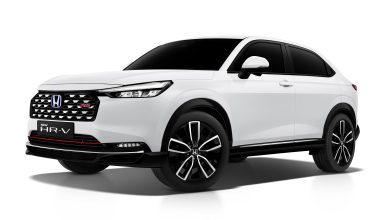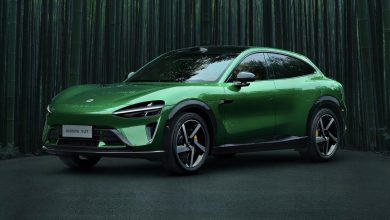Next-Gen All-Electric Porsche Macan Set To Arrive In 2023
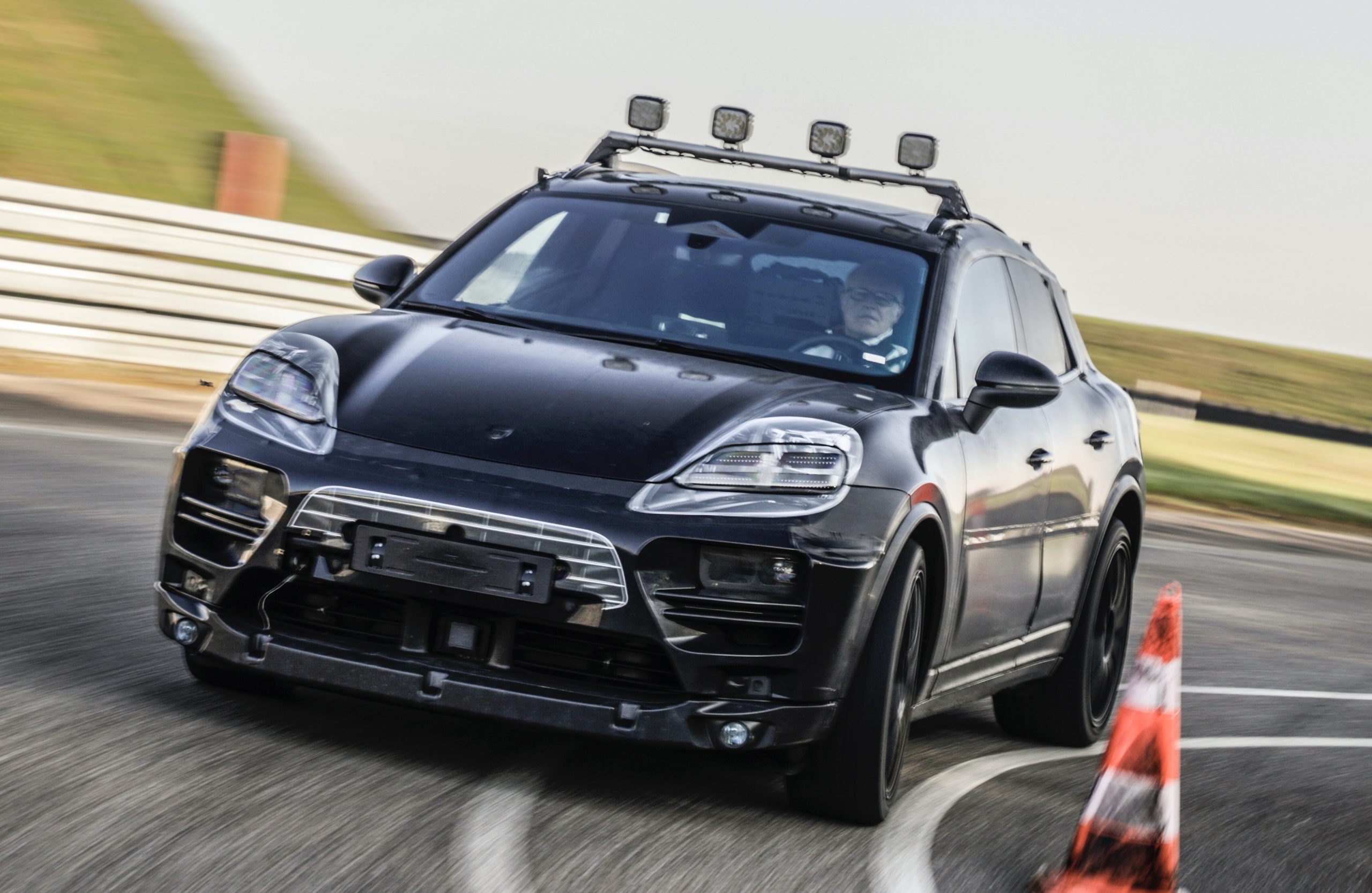
Currently undergoing public testing, this EV Macan will debut two years after its ICE counterpart.
It would seem that Porsche is really leaning heavily into the EV game, as the ever-expanding Taycan lineup will soon be joined by an all-electric Macan come 2023. Currently undergoing public testing, this all-new fully electrified version of the German automaker’s most popular offering will be sold alongside its internal combustion engined counterpart that will be launching first later this year.
Despite Porsche being very forthcoming regarding the developmental process (as to be found in the lengthy press release below) of this next-gen all-electric Macan, concrete details regarding the specs of this e-SUV however have unfortunately been rather thin on the ground at the present moment.
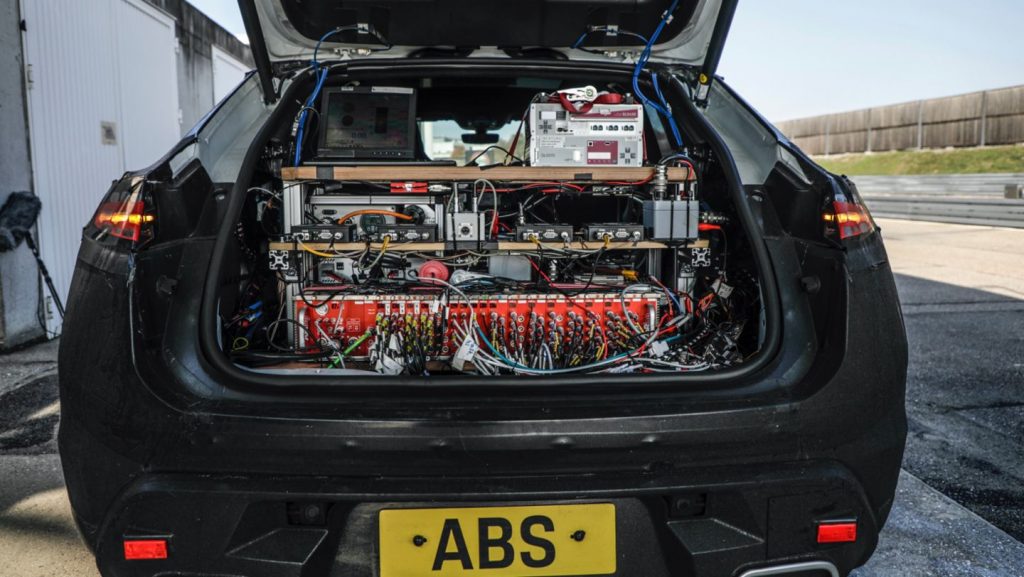
What is known thus far regarding this Macan EV is that it will be similar in size to its next-gen fuel-drinking counterpart, but it will not be sharing the same underpinnings. This new e-SUV instead will be the first Porsche to be based on the VW Group’s Premium Platform Electric (PPE), which to those unfamiliar is the same platform that is set to underpin the forthcoming Audi A6 e-tron.
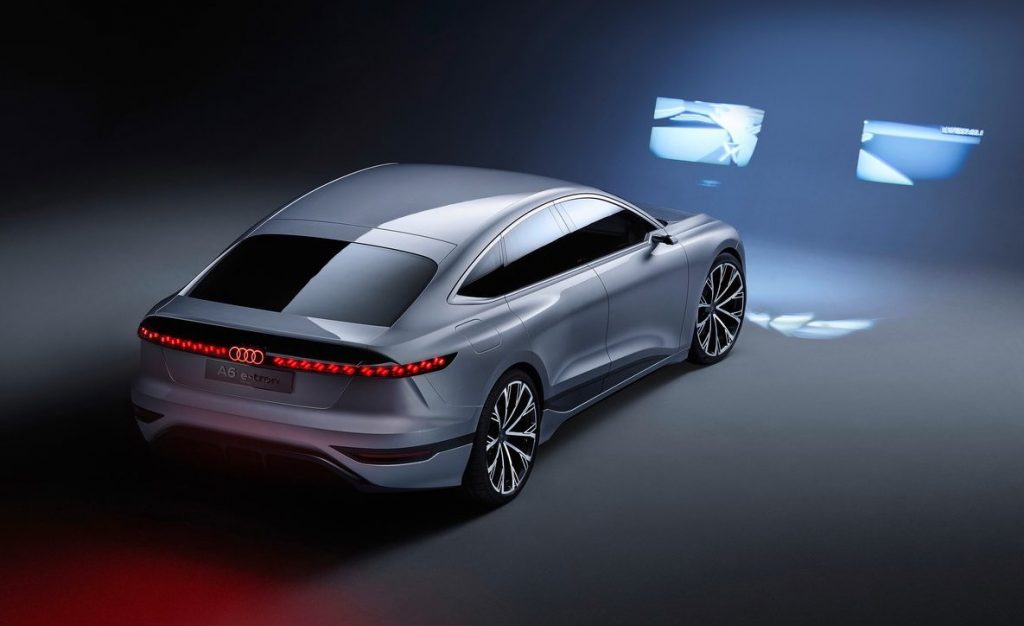
As for what will drive the wheels of this new all-electric Macan, Porsche has confirmed that it will be incorporating the Taycan’s 800 V architecture and promises that this new e-SUV will offer ‘typical Porsche E-Performance’. In fact, the German automaker claims that its new electrified offering will be ‘the sportiest model in its segment’.

Though sporty it may be however, Porsche has yet given away anything about the battery specs or its all-electric range for this upcoming Macan EV. All that is said in this department is that this new e-SUV will have ‘significantly more range than the current Taycan’, which tops out at 463 km on a single charge for the 4S variant with the Performance Battery Plus.
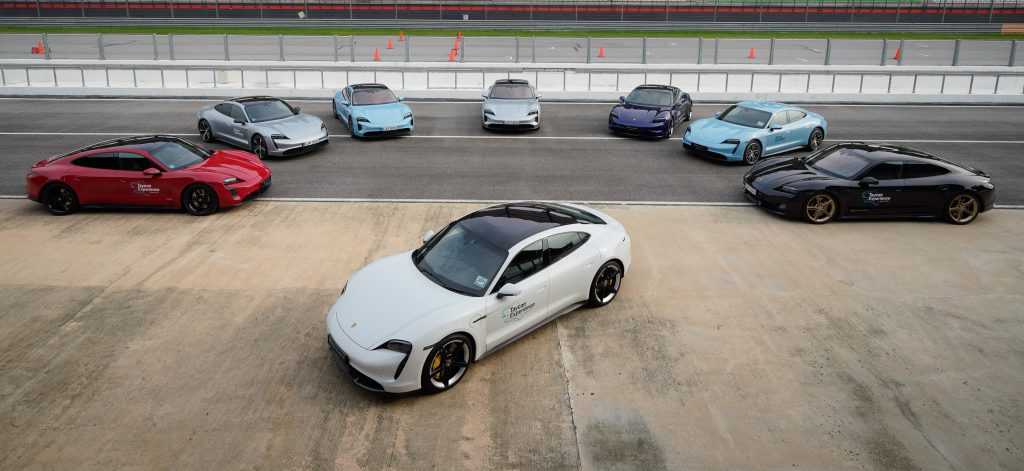
Now turning our attention to the way it would look, official testing shots seen here indicates that this all-electric derivative of the Macan EV will feature a Taycan-esque front end design with slim LED headlights and blanked-off grille. A more sloping roofline than the current car is observed too, which perhaps indicates the imminent arrival of a Macan Coupe too in addition to its traditional boxier offering.
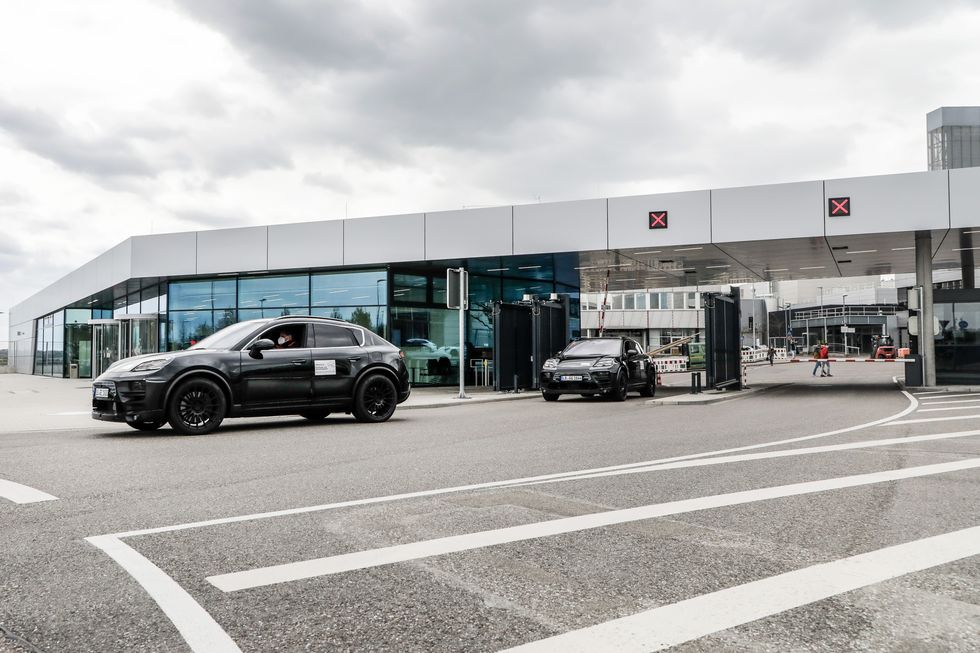
One more interesting thing about this new all-electric Macan will actually be its name, as there hasn’t actually been official confirmation that this all-electric mid-sized SUV will retain the Macan name. Porsche is currently dubbing it to be the Macan Electric internally, but this may well change when it debuts in two years time.
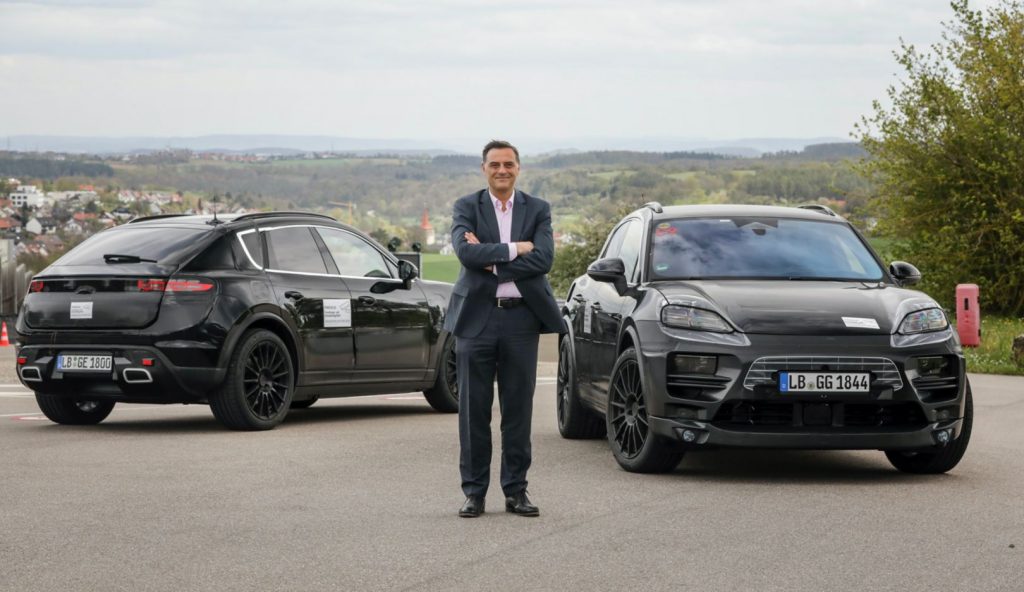
PRESS RELEASE: The all-electric Macan is ready for the road: after initial testing on the proving grounds of the Porsche Development Centre in Weissach, the well-camouflaged next-generation prototypes of the compact SUV are now heading outside Porsche premises for the first time.
“Testing in a real-life environment is now getting underway – one of the most important milestones in the development process,” says Michael Steiner, Member of the Executive Board, Research and Development, at Porsche AG. By the time the all-electric Macan is launched onto the market in 2023, it will have covered some three million test kilometres worldwide in varying conditions. The prototypes are able to incorporate the experience gained from countless previous test kilometres – driven in a virtual space.
Digital development and testing not only saves time and costs, it also preserves resources, so it enhances sustainability. Instead of real vehicles, the engineers use digital prototypes – computational models that replicate the properties, systems and power units of a vehicle to a high degree of accuracy. There are 20 digital prototypes for the purpose of simulation in a number of development categories, such as aerodynamics, energy management, operation and acoustics. “We regularly collate the data from the various departments and use it to build up a complete, virtual vehicle that is as detailed as possible,” explains Dr Andreas Huber, manager for digital prototypes at Porsche. This allows previously undiscovered design conflicts to be swiftly identified and resolved.
The aerodynamics specialists are among the first engineers to work with a digital prototype. “We started with a flow-around model when the project first started about four years ago,” reports Dr Thomas Wiegand, Director of aerodynamics development. Low aerodynamic drag is fundamental to the all-electric Macan with a view to ensuring a long range. Even minor flow enhancements can make a huge difference. The engineers are currently using simulations to fine-tune details such as the cooling air ducts. The calculations not only take into account different arrangements of the components, they also reflect real-life temperature differences.
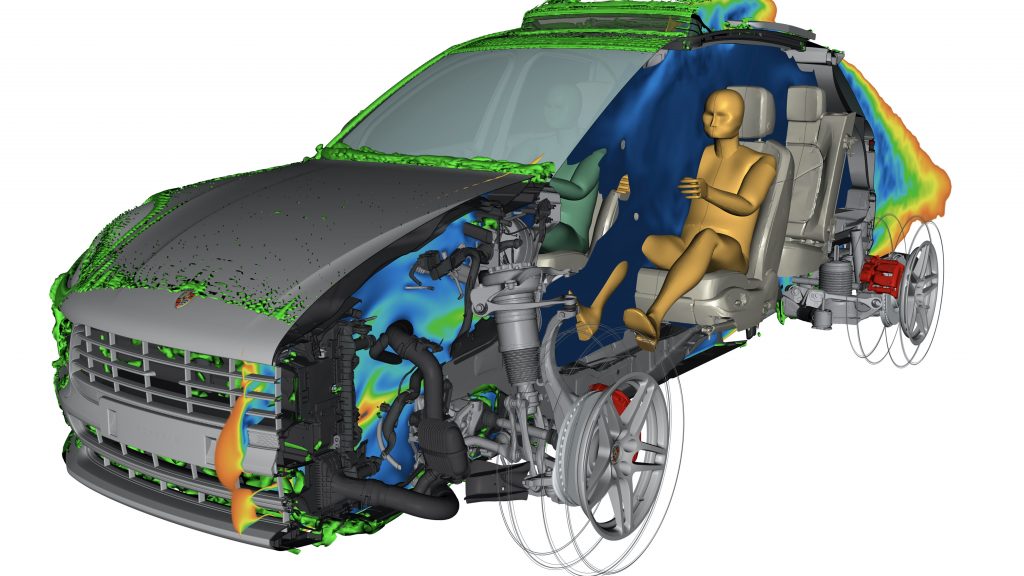
Virtual testing with the new display and operating system
New methods now allow very precise simulation of both aerodynamics and thermodynamics. “The digital world is indispensable to the development of the all-electric Macan,” says aerodynamics expert Wiegand. The electric drive system – from the battery through to the motor – requires a completely separate cooling and temperature control concept, one that is very different from that of a conventionally powered vehicle. While a temperature window of 90 to 120 degrees is the target for combustion engines, the electric motor, powertrain electronics and high-voltage battery require a range of between 20 and 70 degrees, depending on the component. The critical scenarios don’t occur on the road but during fast high power charging at high outside temperatures. However, the Porsche developers are able to precisely calculate and digitally optimise position, flow and temperature.
Virtual prototypes can be combined with real-world scenarios at an early stage. The best example here is the development of a completely new display and operating concept for the next generation of Macan. Using what is known as a seat box to recreate the driver’s environment, the display and operating concept can be brought to life in an early development phase in conjunction with the digital prototype. “Simulation allows us to assess displays, operating procedures and the changing influences during a journey from the driver’s point of view,” explains Fabian Klausmann of the Driver Experience development department. Here, the ‘test drivers’ are not just the specialists themselves but also non-experts. This allows all interaction between driver and vehicle to be studied down to the last detail, enabling selective optimisation even before the first physical cockpit has been built.
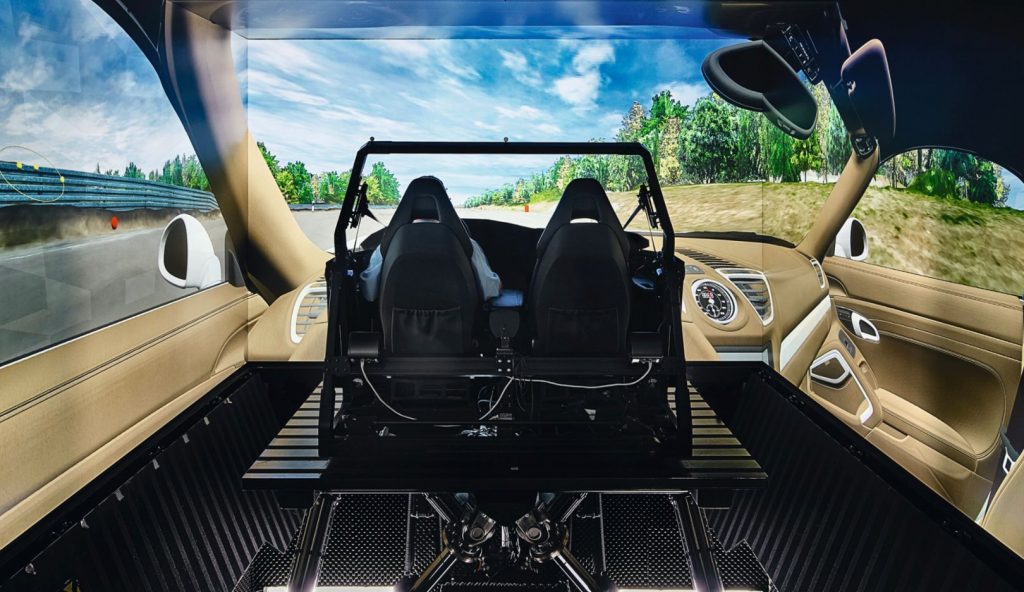
Development goal: to be the sportiest model in the segment
The first physical prototypes of the all-electric Macan were built based on the data obtained from the simulations – in some cases elaborately by hand or using special tools. These are then regularly adapted based on the virtual refinement process.
By the same token, the findings from road testing are fed directly into digital development. “Endurance testing on closed-off testing facilities and public roads in real-life conditions is still indispensable to ensure that the vehicle structure, operational stability and reliability of hardware, software and all functions meet our high quality standards,” says Member of the Executive Board Michael Steiner.
The demanding test programme for the all-electric Macan, carried out under the extremes of climatic and topographical conditions, includes disciplines such as the charging and conditioning of the high-voltage battery, which has to meet very rigorous standards. “Like the Taycan, the all-electric Macan, with its 800-volt architecture, will offer typical Porsche E-Performance,” promises Steiner, citing development goals such as long-distance range, high-performance fast charging and reproducible best-in-class performance figures: “The all-electric Macan will be the sportiest model in its segment.”

Another new Macan with a combustion engine
The market launch of the all-electric Macan – the first Porsche to be built on the Premium Platform Electric (PPE) – is planned for 2023. Porsche is positioning itself flexibly for the transition to pure electromobility. “In Europe, demand for electric vehicles continues to rise, but the pace of change varies considerably across the world. That’s why we’re going to launch another conventionally powered successor to the current Macan in the course of 2021,” says Michael Steiner. The new combustion-engined Macan models will be offered alongside the all-electric Macan in the future. Until then, however, it still has millions of test kilometres to cover – both in real life and virtually.


